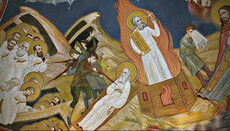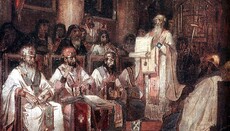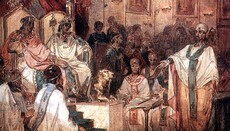Calendar battles or about Julian and Gregorian calendars in stark terms
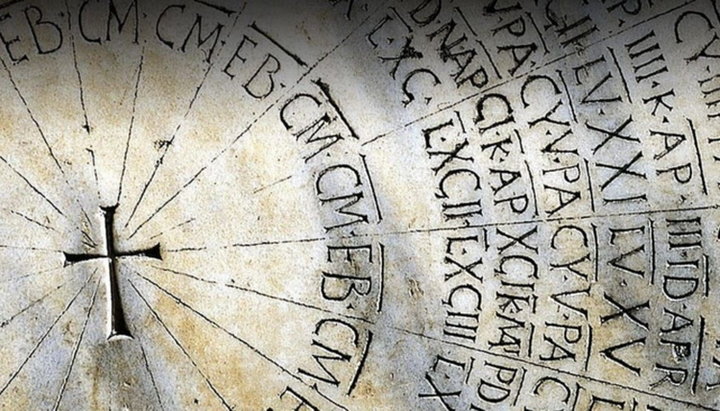
The calendar controversy has not subsided for many years. Both experts and lay people keep on debating on the new and old church calendar. Who is right in this dispute?
Catholics and 11 of the 15 Orthodox Churches (excluding Jerusalem, Russia, Georgia and Serbia) celebrate Christmas on December 25. Calendar disputes have raged from their inception to this day. Both experts and common people discuss the new and old church calendar. Our people are passionate and impulsive in defending their beliefs, and in the course of discussions some are even willing to be burnt at the stake, if only not to reject the calendar tradition to which they are accustomed.
However, there is no teaching about the sacralization of whatever calendar in Christianity, but there are a number of other factors one should pay attention to. Let us examine them.
To begin with, let us point out that the eleven Orthodox Churches mentioned above live by the New Julian calendar, while the whole Western world lives by the Gregorian calendar. These are two fundamentally different calendars, and their dates won’t completely coincide until the year 2800. I realize that such distant times are not accessible to us at all, and no one knows if our world will live up to them, but still they have different principles of calculation.
There is no teaching about the sacralization of whatever calendar in Christianity, but there are a number of other factors one should pay attention to.
The Julian calendar was introduced by a decree of Julius Caesar in 45 B.C. and was developed by Alexandrian astronomers led by Sosigenes. According to some researchers, originally the tradition of celebrating of the new calendar year originated in Mesopotamia: it fell on the spring time and was dedicated to the supreme god Marduk. Over time, it migrated to the Greeks, and then to the Romans, where it was fixed by the relevant order of Caesar. According to the Julian calendar, a year consists of 365.25 days. January 1 as the beginning of the year was not randomly chosen, since it was Roman consuls took office exactly on this day. The year 747 B.C., the date of the foundation of Rome, was taken as the starting point of the calendar.
The date of the chronology of years "from the Nativity" occurred in the 6th century. In the late Roman period, the chronology was calculated from the beginning of the reign of Emperor Diocletian, that is, from 284. The paschal tables were also compiled on the basis of this point of reference. Changes occurred under Pope John I, who commissioned monk Dionysius the Lesser to compile new tables for the celebration of Easter. Using the Alexandrian Easter tables, he did not want to establish a frame of reference from the impious emperor, for Diocletian, after all, went down in history as a persecutor of Christians.
However, the Copts, for example, still calculate Easter precisely from the Diocletian era. This is not a bad thing, as they also call it the "era of martyrs" – recall that the last two years of Diocletian’s reign are known as the "Great Persecution".
So, Dionysius the Lesser introduces the chronology "from the incarnation of Christ", which gradually becomes generally accepted. It should be said, however, that he made a mistake in his calculations and, according to the dates of related events, the Savior was born in the interval between 12-4 B.C., however unusual this may sound. As far as I’m concerned, this fact shouldn’t embarrass anyone, as Christians have always focused on saving and universal significance of Christ, rather than the exact date of His birth.
By the way, December 25/7 January is also not the exact date on which our Lord came into the world. It was chosen as a substitute for the common pagan celebration in honor of the god Jupiter.
Between the years of 284 and 322, the Alexandrian Paschal Table was compiled on the basis of the Julian calendar, which eventually became generally accepted.
It is not for nothing that I have mentioned the Alexandrian paschal tables, since the ancient disputes about the date of the celebration of Easter, which are also relevant to our issue, have to do with them. Recall that these disputes arose at the end of the second century and lasted practically until the fourth century. The churches of Minor Asia, centered at Ephesus, celebrated the Passover with the Jews, i.e. on Nisan 14, while the others celebrated it on the first Sunday immediately following Nisan 14. This disagreement even led to schism. Avoiding unnecessary nitty-gritty, it is worth saying that between 284 and 322, the Alexandrian Paschal Calendar, which was based on the Julian calendar, was drawn up and eventually became generally accepted. This tradition was consolidated by the decrees of the First Ecumenical Council, after which St. Emperor Constantine the Great wrote to the absent bishops as follows:
"Here, too, the day of the Holy Pascha was discussed, and it was generally agreed that it was better for all and everywhere to celebrate it on the same day... for what could be more glorious and more fitting for us than for all to celebrate this solemn day, which gave us the hope of resurrection, according to the same statutes and in the same way ... To this we must add that it is very improper to show dissension in a matter of such great importance and in the celebration of such a solemn worship."
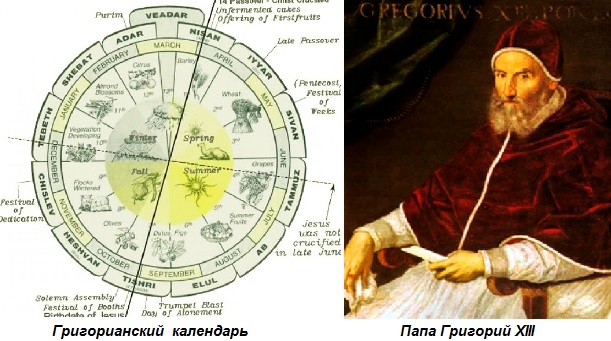
In general, since then everyone had been living happily for more than a thousand years till 1582, when Pope Gregory XIII decided to correct the errors of the Julian calendar. It was he who introduced the Gregorian calendar, by which the whole world lives now. According to the pontiff's calculations, the year consists of 365.2425 days. As a result, by the end of the XVI century the gap between the calendars grew to 10 days, and today – 13 days.
However, in addition to the aforementioned chronologies, there is also a scientific concept of the annual cycle. As we remember, a year is a period of time equal to approximately one revolution of the Earth around the Sun. I say approximately, because there are nuances. It all depends on what is taken as a reference point. There are sideric (or stellar), tropical, anomalous, and draconic years. The most popular are the sidereal and tropical, so we will focus on them.
So, the sidereal year is determined on the basis of the visible annual rotation of the Sun in the celestial sphere in relation to the stationary stars and makes 365,2564 days. The tropical year is calculated by the time interval between two consecutive passages of the Sun between the points of the vernal equinox. A tropical year equals 365.2422 days. Simple calculations allow to say that the sideric year is more exact, because its change in duration within one hundred years in 24 hours is +0,11x10-6, while the same indicator in the tropical year is –6,16x10-6.
It is enough to make a simple calculation to understand that the Julian calendar is more accurate.
And now when we compare the Julian and Gregorian calendars to the sidereal year, we see that they differ from it, respectively, by 0.00175% and 0.0038%. So it turns out that the Julian calendar is more accurate. When Pope Gregory XIII introduced his own chronology in the West, there was an immediate reaction from the Orthodox East. In 1583 a council was convened in Constantinople, the resolution of which includes the following words:
"Whoever fails to follow the customs of the Church and what the seven Holy Ecumenical Councils decreed about Holy Pascha and the Monthly Calendar and lawfully established for us to follow, but opposes with the godless astronomers all the rules of the Holy Councils and intends to change and weaken them, let them be anathematized, excommunicated from the Church of Christ and the assembly of the faithful."
Thus, having dealt with the Gregorian calendar, the Orthodox Church lived a little more than four hundred years until the Belgrade University astronomer Milutin Milankovic developed the New Julian chronology as a better alternative to the Gregorian in 1923. Without going into computational details, let us note that in order to avoid errors, Milankovic built his calendar not on the 400-year cycle, but on a more complex 900-year cycle. In the latter (in contrast to the Gregorian, where leap years are the years whose ordinal numbers are divided without a remainder by 4) leap years are also the oenes which, when divided by 900, have 2 or 6 in residuo (2000, 2900, 3800, etc.).
It turns out that there are 303 simple and 97 leap years over 400 years in the Gregorian calendar, and 682 and 218, respectively, over 900 years in the New Julian calendar. The discrepancy of one day between these chronologies will level off within 43500 years and, as I noted in the beginning, they will completely coincide before 2800.
The Churches of Constantinople, Greece, Cyprus, Romania and Poland switched to the New Julian calendar in 1924, Alexandria in 1929, Antioch in 1948 and Bulgaria in 1968. For Greece, Bulgaria, and Romania, the calendar reform was not without the so-called Old Calendar Schisms, some of which are still relevant today. However, all Churches calculate Easter, as before, according to the Julian calendar, because the conversion of Easter to the Gregorian style generates a number of anomalies, such as the disappearance of the Peter and Paul fast.
* * *
Naturally, ordinary people are ignorant of the difference between the Gregorian and New Julian calendars. Basically, to date it is only theoretical and has no practical effects, so the two chronologies are actually mixed and perceived as one. Therefore, it seems to me, it is worth taking heed of the words of Metropolitan Anthony (Vadkovsky):
"The Julian calendar, when applied to Church practice, is a reliable anchor for all intents and purposes which keeps the Orthodox from the final absorption by the non-Orthodox world. It is like a banner under which the children of Orthodoxy gather together. Allowing one of the Orthodox children to separate from us in an ecclesiastical practice and to go along with the non-Orthodox, while seemingly useful and without any dogmatic difference, may have undesirable and even harmful implications in the future for the welfare of the Universal Church and may serve as a weapon in the hands of Her enemies, who, under the pretext of alleged interests of Orthodox peoples, have long been turned against the universal unity."

